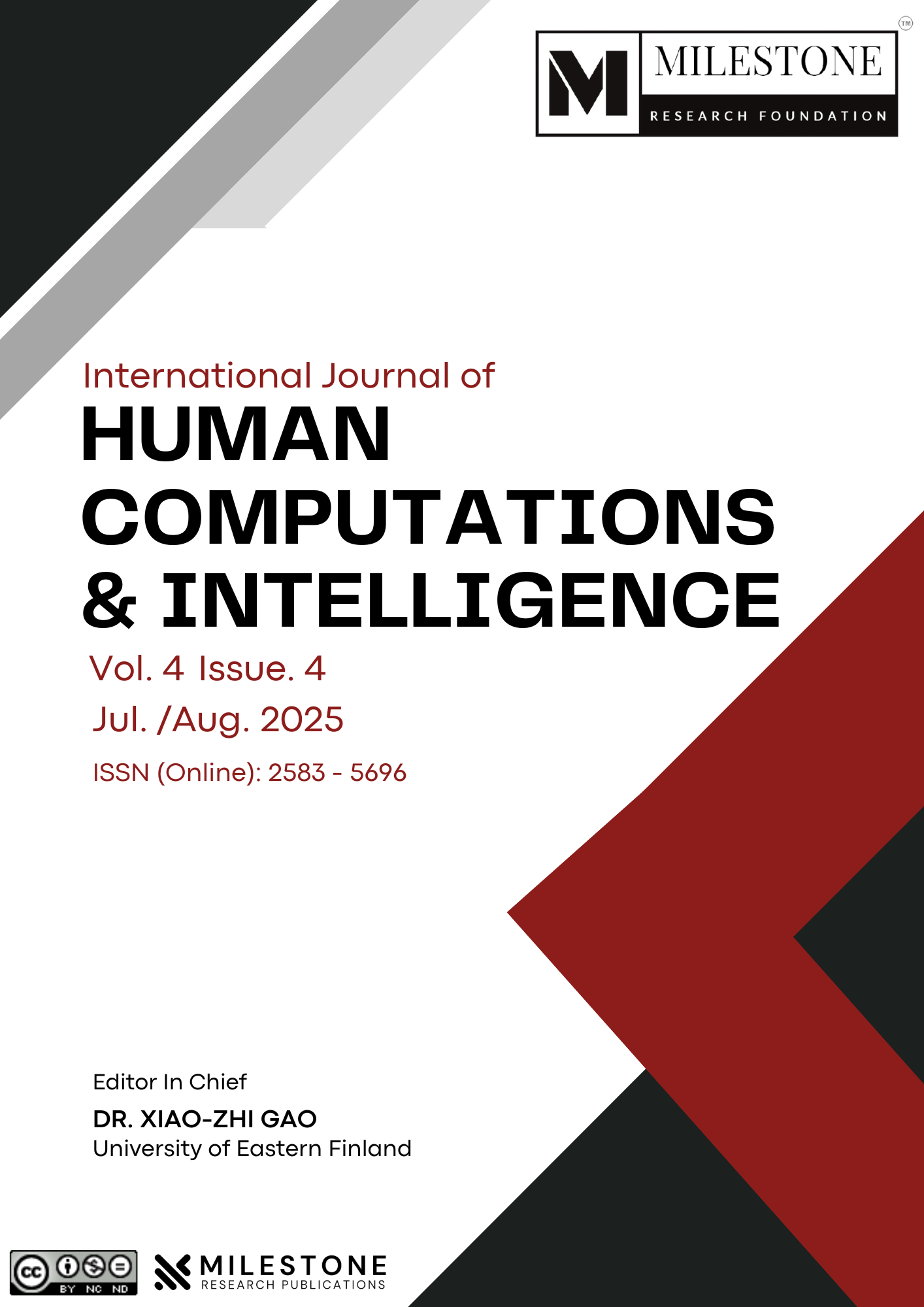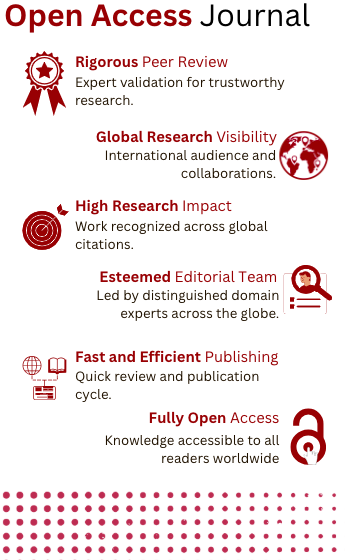Deep Defender: Smart detection of phishing websites
DOI:
https://doi.org/10.5281/zenodo.15429934Keywords:
phishing attacks, cybersecurity, malicious nodes, cyber lawsAbstract
Phishing is a consistent threat causing internet users to provide sensitive details in fictitious network environments. Current detection tools tend to sacrifice accuracy and timeliness of response, in doing which the threat exposure level is increased for the users. Here is presented a system based on machine learning intended to detect phishing URLs in the moment, with the aim of enhancing general online footprint safety.Based on the RNN-GRU algorithm, the system tries to maximize the effectiveness and promptness of phishing URL detection. The introduction of this approach brings an effective shield against phishing, a considerable increase in users protection in the digital era.
References
Basit, A., Zafar, M., Javed, A. R., & Jalil, Z. (2020, November). A novel ensemble machine learning method to detect phishing attack. In 2020 IEEE 23rd International Multitopic Conference (INMIC) (pp. 1–5). IEEE. https://doi.org/10.1109/INMIC50486.2020.9318105
Alkawaz, M. H., Steven, S. J., Mohammad, O. F., & Johar, M. G. M. (2022, May). Identification and analysis of phishing website based on machine learning methods. In 2022 IEEE 12th Symposium on Computer Applications & Industrial Electronics (ISCAIE) (pp. 246–251). IEEE. https://doi.org/10.1109/ISCAIE53661.2022.9803903
Do, N. Q., Selamat, A., Krejcar, O., Herrera-Viedma, E., & Fujita, H. (2022). Deep learning for phishing detection: Taxonomy, current challenges and future directions. IEEE Access, 10, 36429–36463. https://doi.org/10.1109/ACCESS.2022.3162951
Tang, L., & Mahmoud, Q. H. (2021). A deep learning-based framework for phishing website detection. IEEE Access, 10, 1509–1521. https://doi.org/10.1109/ACCESS.2021.3138631
Zara, U., Ayub, K., Khan, H. U., Daud, A., Alsahfi, T., & Gulzar, S. (2024). Phishing website detection using deep learning models. IEEE Access. https://doi.org/10.1109/ACCESS.2024.3392073
Jain, A. K., & Gupta, B. B. (2018). PHISH-SAFE: URL features-based phishing detection system using machine learning. In Cyber Security: Proceedings of CSI 2015 (pp. 467–474). Springer Singapore. https://doi.org/10.1007/978-981-10-8536-9_37
Rajasekar, V., Premalatha, J., Sathya, K., Raakul, S. D., & Saracevic, M. (2021, February). An enhanced anti-phishing scheme to detect phishing website. In IOP Conference Series: Materials Science and Engineering (Vol. 1055, No. 1, p. 012077). IOP Publishing. https://doi.org/10.1088/1757-899X/1055/1/012077
Wang, W., Zhang, F., Luo, X., & Zhang, S. (2019). PDRCNN: Precise phishing detection with recurrent convolutional neural networks. Security and Communication Networks, 2019(1), Article 2595794. https://doi.org/10.1155/2019/2595794
Lakshminarayana, L. N., & Gangadharaiah, S. R. (2023). Trust based multi objective-pelican optimization algorithm for mobile ad hoc networks. International Journal of Intelligent Engineering and Systems, 16(6). https://doi.org/10.22266/ijies2023.1231.17
Lavanya, N. L., & Nagarathna, C. (2024). Transformer model to evaluate subjective script. International Journal of Human Computations & Intelligence, 3(4), 350–357.
Pasha, A., Ahmed, S. T., Painam, R. K., Mathivanan, S. K., Mallik, S., & Qin, H. (2024). Leveraging ANFIS with Adam and PSO optimizers for Parkinson's disease. Heliyon, 10(9), e23976. https://doi.org/10.1016/j.heliyon.2024.e23976
Kumar, S. S., Ahmed, S. T., Sandeep, S., Madheswaran, M., & Basha, S. M. (2022). Unstructured oncological image cluster identification using improved unsupervised clustering techniques. Computers, Materials & Continua, 72(1), 1061–1077. https://doi.org/10.32604/cmc.2022.020884
Downloads
Published
How to Cite
Issue
Section
License
Copyright (c) 2025 Lavanya N L, Mani Prasad K R, Manjunatha Prasad G R, Monish Gowda V, Sachin Krishna K U

This work is licensed under a Creative Commons Attribution-NonCommercial-NoDerivatives 4.0 International License.







